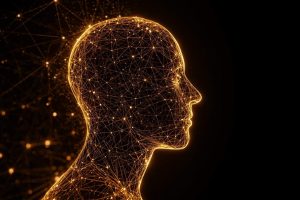The Psychology Behind Effective Social Media Ads
Recent Post
Want to improve your social media reach and branding?
Phone
+92-302-5643101
info@hazaradigitals.com
Introduction
Ever wondered why some ads instantly grab your attention while others go unnoticed?
It’s not just about great visuals — it’s about understanding human psychology.
In digital marketing, the brands that succeed are those that know how people think, feel, and decide.
Let’s explore the psychology behind effective social media ads and how you can use it to boost conversions in 2025.
- May 3, 2024
- Insight
1. Emotions Drive Decisions
Humans don’t buy products — they buy emotions.
Whether it’s excitement, happiness, or trust, emotional triggers make ads memorable.
💡 Example: Coca-Cola uses joy and togetherness, while Nike sells motivation and self-belief.
When creating your next ad, ask: “What emotion do I want my audience to feel?”
That emotion becomes the core of your message.
Example: Coca-Cola uses joy and togetherness, while Nike sells motivation and self-belief
Hazara digital
2. The Power of Colors
Colors influence perception and action.
Each color evokes specific feelings:
| Color | Emotion | Best For |
|---|---|---|
| Red | Excitement, Urgency | Sales & Promotions |
| Blue | Trust, Stability | Corporate & Tech Brands |
| Gold | Luxury, Confidence | Premium Services |
| Black | Power, Elegance | High-End Brands |
At Hazara Digitals, we use black and gold — colors that reflect prestige, quality, and bold innovation.
3. The Principle of Social Proof
People trust what others trust.
When users see testimonials, ratings, or success stories, they feel confident engaging with your brand.
🧠 Pro Tip: Add screenshots of customer feedback or project results in your ad visuals — they work better than long text.
4. Scarcity and Urgency
The human brain reacts quickly to “limited-time” opportunities.
Ads that say “Only 24 hours left!” or “Limited seats available” trigger a sense of urgency that drives faster action.
⏰ Example: “Get 30% off our digital marketing services — offer ends tonight!”
Use this psychological trigger carefully — too much urgency can feel fake.

5. Simplicity Sells
The most powerful ads are often the simplest.
Avoid overcrowded visuals or complicated text.
Use one message, one emotion, and one clear CTA (Call to Action).
✅ Example: “Boost Your Brand with Hazara Digitals — Let’s Grow Together.”
Your audience should understand what you offer in 3 seconds or less
- 6. Consistency Builds Trust Psychology tells us that repetition builds familiarity — and familiarity builds trust. Maintain consistent fonts, colors, and tone across all your ads and posts. Your audience should recognize your brand instantly, even without a logo. 🔁 Example: Apple and Tesla both use clean visuals and minimal text — yet everyone knows their ads.
- 7. Storytelling Engages the Brain Stories activate emotional and visual areas of the brain, making ads unforgettable. Tell mini-stories in your visuals or captions — like a customer’s journey from struggle to success. 🎥 Example: A 15-second Instagram ad showing a small brand’s transformation after using your services. People don’t remember data — they remember stories that inspire.
- 8. Reward the Viewer The brain loves rewards — even small ones. Offer a free guide, consultation, or discount at the end of your ad to make users feel appreciated. 🎁 Example: “Download our free Social Media Growth Checklist — only for our followers!” When people feel rewarded, they’re more likely to become customers.
Conclusion
The secret to effective social media ads lies in psychology — not just design.
When you combine emotion, color, trust, and simplicity, you create campaigns that connect deeply and convert effectively.
So the next time you design an ad, think like a psychologist, not just a marketer — and watch your engagement skyrocket.


